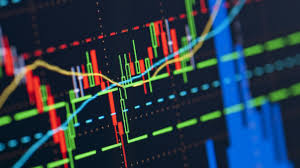
Introduction to Forex
Forex, short for foreign exchange, is the largest financial market in the world, where currencies are traded. With an average daily trading volume exceeding $6 trillion, Forex operates 24 hours a day, five days a week, facilitating the buying and selling of currencies globally. This forex charts is crucial for international trade, investment, and tourism, allowing participants to convert one currency into another seamlessly.
How Forex Works
In the Forex market, currencies are traded in pairs, such as EUR/USD (Euro/US Dollar) or GBP/JPY (British Pound/Japanese Yen). The first currency in the pair is the base currency, and the second is the quote currency. The exchange rate indicates how much of the quote currency is needed to purchase one unit of the base currency. For example, if the EUR/USD exchange rate is 1.20, it means 1 Euro can be exchanged for 1.20 US Dollars.
Market Participants
Various participants engage in Forex trading, including:
- Banks and Financial Institutions: These entities conduct significant transactions for clients and themselves, influencing currency values through large-scale trading.
- Corporations: Businesses involved in international trade use Forex to hedge against currency fluctuations, ensuring stability in their revenues and expenses.
- Retail Traders: Individual investors participate in Forex trading through brokers, seeking to profit from currency price movements.
- Governments and Central Banks: These institutions intervene in the Forex market to stabilize or influence their currency values through monetary policy.
Types of Forex Trading
There are several trading styles in the Forex market:
- Day Trading: Involves opening and closing positions within a single trading day, aiming to capitalize on short-term price movements.
- Swing Trading: Traders hold positions for several days to weeks, taking advantage of price swings in the market.
- Position Trading: This long-term strategy involves holding positions for weeks, months, or even years, focusing on fundamental factors rather than short-term market fluctuations.
Key Concepts in Forex Trading
- Pips: The smallest price movement in a currency pair, usually measured to four decimal places (e.g., a movement from 1.1200 to 1.1201 is one pip).
- Leverage: A feature that allows traders to control a larger position with a smaller amount of capital. While it can amplify profits, it also increases the risk of significant losses.
- Margin: The amount of money required to open and maintain a leveraged position. Traders must be cautious about margin calls, which occur when the equity in the account falls below the required level.
- Technical and Fundamental Analysis: Traders use technical analysis to analyze price charts and patterns, while fundamental analysis involves evaluating economic indicators, news, and geopolitical events that can influence currency values.
Risks in Forex Trading
Forex trading involves substantial risks due to market volatility, leverage, and the influence of external factors. Some common risks include:
- Market Risk: The potential loss due to adverse price movements in the market.
- Liquidity Risk: The risk of not being able to execute trades at the desired price due to insufficient market activity.
- Counterparty Risk: The risk that the broker or dealer may default on their obligations.
Conclusion
The Forex market presents immense opportunities for traders, but it also comes with significant risks. Understanding how Forex works, the various participants, trading styles, and essential concepts can help traders make informed decisions. As with any investment, it’s crucial to conduct thorough research and develop a solid trading plan to navigate the complexities of currency trading successfully. Whether you are a beginner or an experienced trader, mastering the Forex market requires discipline, patience, and continuous learning.